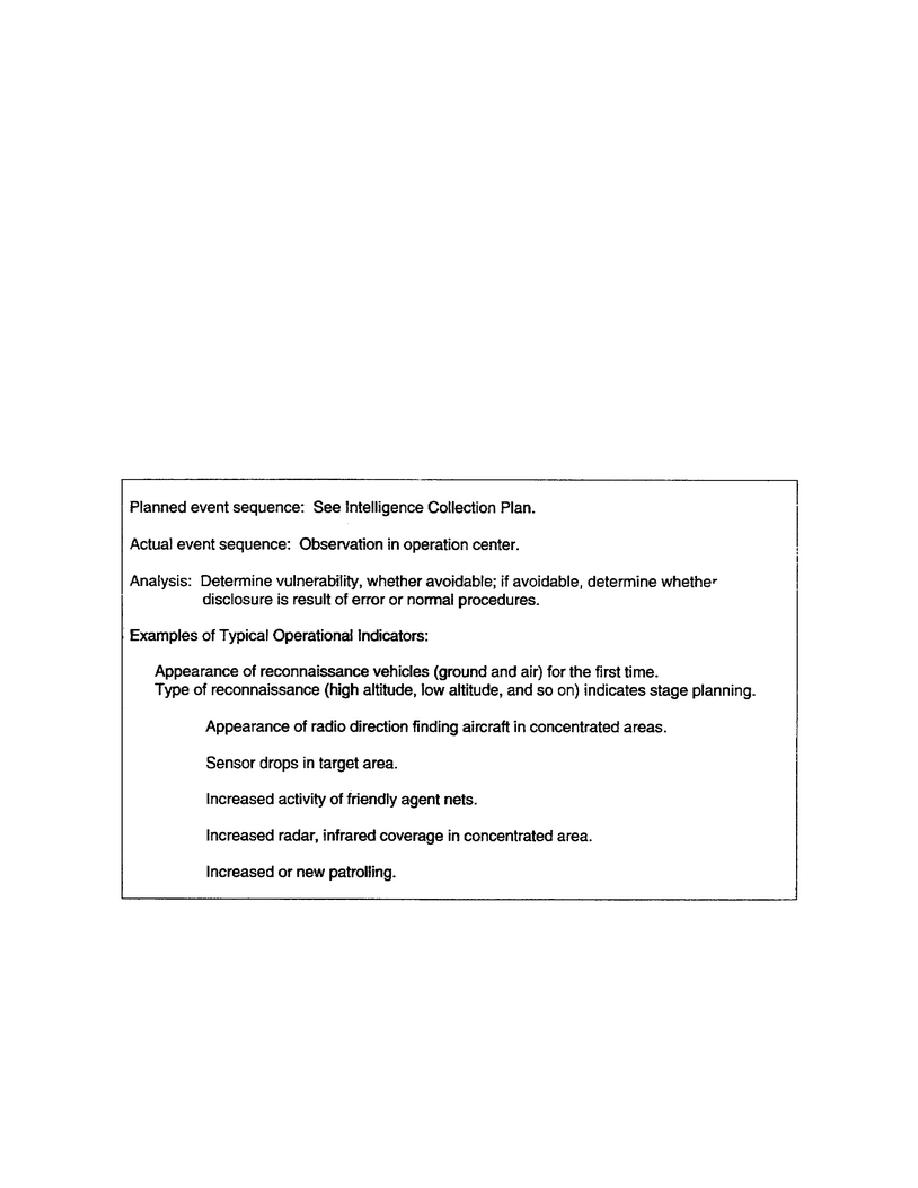
CHRONOLOGICAL. One of the basic techniques of OPSEC surveying involves the construction of a
chronological depiction of the events which occur in the operations or activity being surveyed; literally, a time-
phased description of what occurs when, where, and who is involved. After the chronological description is
assembled, vulnerabilities can be identified in light of the known or projected threat. Because of the complexity
of most survey subjects, and to facilitate a logical division of labor among survey team members, chronological
descriptions may be constructed for separate functional areas such as operations, communications, logistics,
administration, or any other functions appropriate to the survey. This functional approach aids the team
members in defining their separate areas of inquiry during the field or data collection phase of the survey.
Later, the functional outlines can be correlated with each other to describe the chronological events of the entire
operation or activity.
During the initial review of operations plans, orders, and procedures, individual team members can begin to
develop functionally oriented outlines for their areas of interest. Initially, the outlines will be skeletal
projections in a narrative, table, or graph format of what is expected to occur in the chronology of events in the
particular, functional area. They can serve as planning aids for the subsequent field survey phase. For example,
units and facilities associated with each of the events can be identified and geographically grouped as an aid in
planning the travel itinerary of team members during the field survey. Collectively the initially developed
functional outlines provide a basis for planning the field survey phase and constitute a basis for observation and
interviews. Figure 1-1 is an example of a functional outline for intelligence.
Figure 1-1. Functional Intelligence Outline/Profile Guideline.
During the field survey phase, team members will acquire additional information through observation,
interviews, and other data collection techniques, enabling further development and refinement of the functional
outlines. Collectively, the outlines project a time-phased picture of the events associated with the planning,
preparation, execution, and conclusion of the operation or activity being surveyed, and provide a basis for the
analysis to identify those events and activities which are vulnerable to adversary exploitation.
Survey Announcement. After the selection of team members and the familiarization of the team with the
operation or activity to be surveyed, the headquarters responsible for the organizations that will be surveyed



 Previous Page
Previous Page
